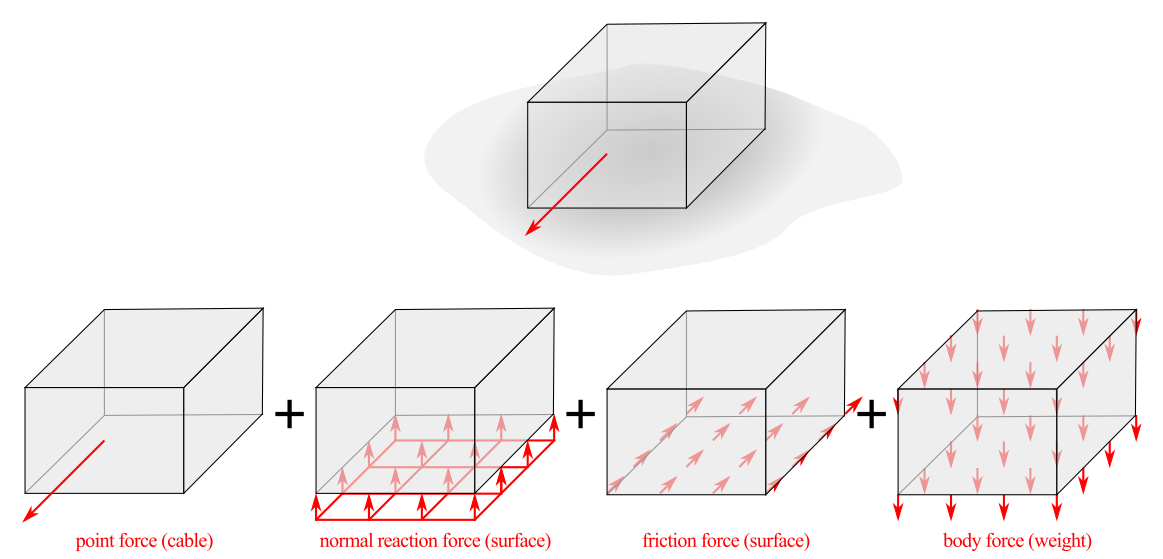Section 1.4 Forces
Key Questions
At the end of this chapter you should be able to answer these questions.
- What are some of the fundamental types of forces used in statics?
- Why do we often simplify distributed forces with equivalent forces?
Statics is a course about forces and we will have a lot to say about them. At its simplest, a force is a 'push or pull', but forces come from a variety of sources and occur in many different situations. As such we need a specialized vocabulary to talk about them. We are also interested in forces that cause rotation, and we have special terms to describe these too.
As an example of the types of forces you will encounter in statics consider the forces effecting a box on a rough surface being pulled by a cable. The loading on the box can be represented by four different forces. The cable causes a point force, the normal and friction forces are reaction forces, and the weight is a body force.

The definitions below describe a few of the force types shown in Figure 1.4.1. Other types of forces will be defined as they are used later in the book.
Point Force.
A point force is a force that acts at a single point. Point forces are also called concentrated forces. Examples would be a rope pulling on a block, or the cable that suspends a wrecking ball. In reality, point forces are an idealization as all forces are distributed over some amount of area. Since point forces are the easiest to deal with computationally, tools will be provided throughout this course which allows you to turn surface and body forces into point forces.
Reaction Force.
Forces and couple-moments that come from supports that hold or constrain an object or mechanical system in equilibrium are called the reaction forces or the reactions. These are called the reactions because they react or respond when other forces acting on the system change.
Reaction forces are introduced in Chapter 3 and reaction couples are introduced in Chapter 5.
Body Force.
Body forces are forces that are distributed throughout a three dimensional body.
The most important body force is the weight of an object, but other body forces include buoyancy and forces caused by gravitational, electric, and magnetic fields.
Weight and buoyancy will be the only body forces we consider in statics. In many situations, these forces are small in comparison to the loads acting on the object, and as such, they may be neglected. The decision to neglect forces must be made on the basis of sound engineering judgment, however in this course, you should consider the weight in your analysis if a problem statement provides enough information to determine the force, otherwise, you may ignore it.
Remember that mass = density times volume.
As shown in Chapter 7, for computational simplicity we often model a body’s weight as a single equivalent point force acting through the center of mass of the body.